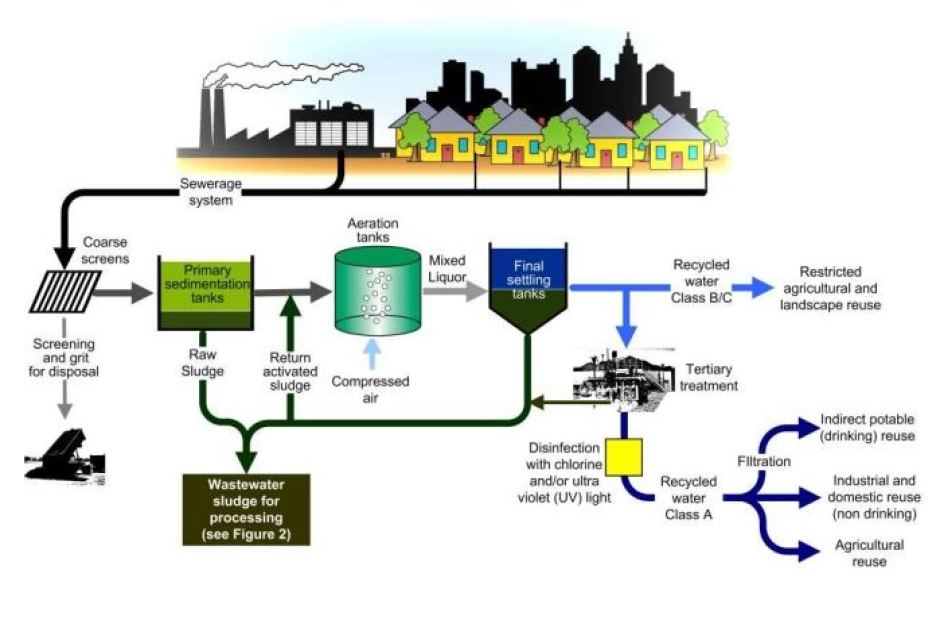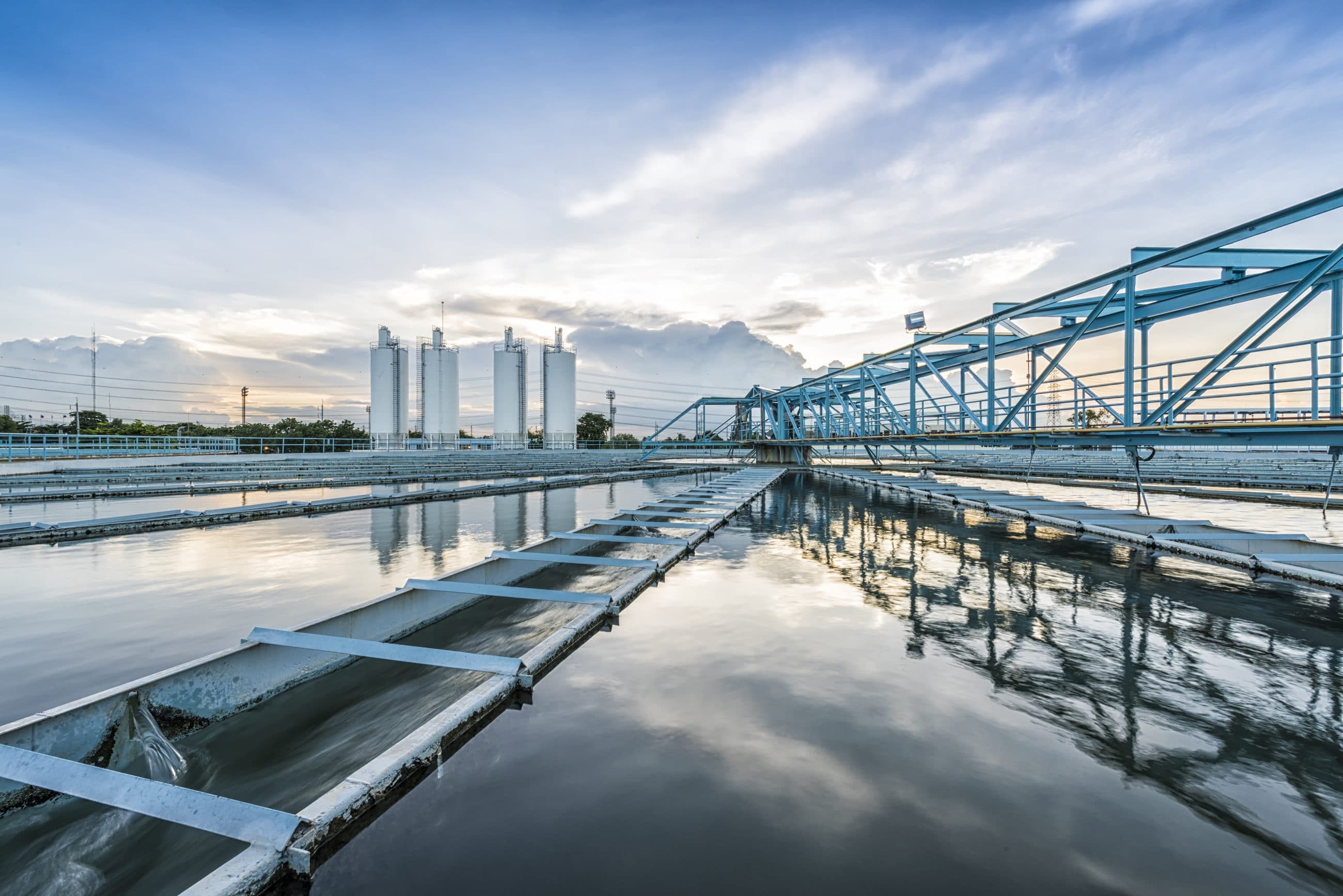Industrial Waste Water Treatment-- Industrial-Grade Water Purification and Filtration Solutions
Wiki Article
Trick Techniques in Hazardous Waste Water Treatment Processes
The treatment of commercial wastewater is a crucial element of environmental administration, including an array of strategies made to reduce the influence of impurities. From the fundamental physical approaches that separate solids to the innovative chemical and organic processes that target specific pollutants, each technique plays an essential role in accomplishing water high quality standards. Innovations in modern technologies such as membrane layer filtering and advanced oxidation procedures supply cutting-edge options for improving treatment effectiveness. Understanding just how these approaches interconnect and their effects for sustainability increases vital inquiries concerning the future of wastewater monitoring in industry.Physical Therapy Approaches
Exactly how effectively can physical therapy techniques resolve the intricacies of commercial wastewater? Physical therapy approaches play a pivotal function in the initial stages of wastewater management, focusing primarily on the elimination of solids and large particulates. Techniques such as sedimentation, purification, and flotation are crucial for decreasing the concentration of suspended solids, consequently improving the performance of succeeding therapy procedures.Sedimentation involves the gravitational settling of solids, permitting for the separation of heavier materials from the wastewater. This approach is especially efficient in clarifying water prior to chemical or organic treatments.
In addition, flotation protection methods, which use air bubbles to raise suspended solids to the surface area for elimination, are effective in dealing with wastewater with high focus of fats, oils, and greases. Overall, physical treatment techniques act as an important initial step in the comprehensive management of industrial wastewater, making sure that the lots on subsequent therapy phases is lessened and improving general treatment efficacy.
Chemical Therapy Techniques
While physical treatment approaches prepared for effective wastewater administration, chemical treatment strategies are crucial for attending to the more complex impurities frequently found in commercial effluents. These techniques utilize various chemical representatives to precipitate, reduce the effects of, or oxidize hazardous substances, ensuring a more complete removal of toxins.
One typical technique is coagulation and flocculation, where chemical coagulants such as light weight aluminum sulfate or ferric chloride are contributed to promote the aggregation of suspended bits. This procedure improves solid-liquid splitting up, minimizing turbidity and improving water top quality. Additionally, neutralization processes are employed to adjust the pH of wastewater, making use of bases or acids to counteract acidic or alkaline streams, specifically.
Oxidation-reduction responses play a vital function in derogatory organic impurities and microorganisms. Chemical oxidants like hydrogen, ozone, or chlorine peroxide are utilized to damage down complicated natural compounds, making them less damaging or a lot more biodegradable. Moreover, advanced oxidation processes (AOPs) integrate numerous oxidation techniques to enhance pollutant removal effectiveness.
Biological Treatment Processes
The effectiveness of wastewater therapy is dramatically boosted by organic therapy procedures, which harness the natural metabolic tasks of microorganisms to decompose raw material and eliminate contaminants. Industrial Waste Water Treatment. These procedures primarily involve cardiovascular and anaerobic food digestion, each tailored for certain kinds of wastewaterAerobic treatment procedures make use of oxygen to sustain microbial development, promoting the failure of natural toxins into co2 and water. Common techniques include activated sludge systems, where oygenation containers facilitate the blending of wastewater with bacteria, and flowing filters, which urge biofilm growth on media surfaces.
Conversely, anaerobic therapy procedures occur in the absence of oxygen, making use of anaerobic germs to decay raw material, resulting in biogas production, a renewable energy resource. Anaerobic digesters are frequently used in commercial settings for this function, successfully reducing the volume of sludge while producing valuable biogas.
The choice of a biological therapy technique depends on wastewater attributes, therapy goals, and regulatory requirements. The assimilation of biological procedures in wastewater treatment not just improves contaminant elimination effectiveness however additionally promotes sustainability by minimizing chemical usage and supporting source recovery.
Advanced Oxidation Processes

Common AOP strategies consist of Fenton's photocatalysis, reagent, and ozonation. Fenton's reagent, a combination of hydrogen peroxide and ferrous iron, catalyzes the formation of hydroxyl radicals, making it reliable for treating wastewater having phenolic substances and various other stubborn substances.
AOPs provide a number of advantages, consisting of reduced sludge production and the capability to deal with wastewater with high focus of natural contaminants. Nevertheless, the implementation of AOPs calls for cautious consideration of functional parameters and cost-effectiveness, guaranteeing that these sophisticated methods are suitably incorporated discover this info here right into existing wastewater therapy systems.
Membrane Filtration Technologies

Microfiltration works for eliminating put on hold bacteria and solids, while ultrafiltration targets smaller sized organic molecules and viruses. Nanofiltration links the space between ultrafiltration and turn around osmosis, properly eliminating organic substances and divalent ions. Reverse osmosis provides the highest degree of filtration, utilized largely for desalination and eliminating mono-valent ions.
Membrane layer modern technologies provide numerous benefits, including low energy usage compared to conventional therapy techniques, modular layout for scalability, and the capacity for water recuperation and reuse. Challenges such as membrane fouling and the demand for browse around this web-site regular upkeep must be dealt with to make certain system efficiency. Generally, membrane purification modern technologies represent an essential component of contemporary industrial wastewater therapy methods, promoting sustainability and resource conservation in water administration.
Verdict
Finally, industrial wastewater therapy utilizes a varied selection of methods, consisting of physical, chemical, organic, and advanced methods. Each method plays an essential function in effectively dealing with different contaminants, enhancing water top quality, and promoting source sustainability. The assimilation of these methods promotes a thorough therapy method, ensuring that industrial effluents fulfill regulative requirements while minimizing ecological influence. Continued improvements in these techniques will additionally boost the effectiveness and performance of wastewater therapy processes in industrial settings.The treatment of industrial wastewater is an essential facet of environmental management, involving an array of methods created read review to mitigate the effect of pollutants.Just how efficiently can physical treatment techniques resolve the intricacies of commercial wastewater?Advanced oxidation processes (AOPs) stand for a sophisticated approach in industrial wastewater treatment, designed to properly weaken natural contaminants that are typically resistant to standard treatment techniques (Industrial Waste Water Treatment).In verdict, industrial wastewater treatment employs a diverse range of techniques, consisting of physical, chemical, organic, and progressed techniques. Proceeded innovations in these methods will certainly better improve the effectiveness and performance of wastewater therapy procedures in industrial setups
Report this wiki page